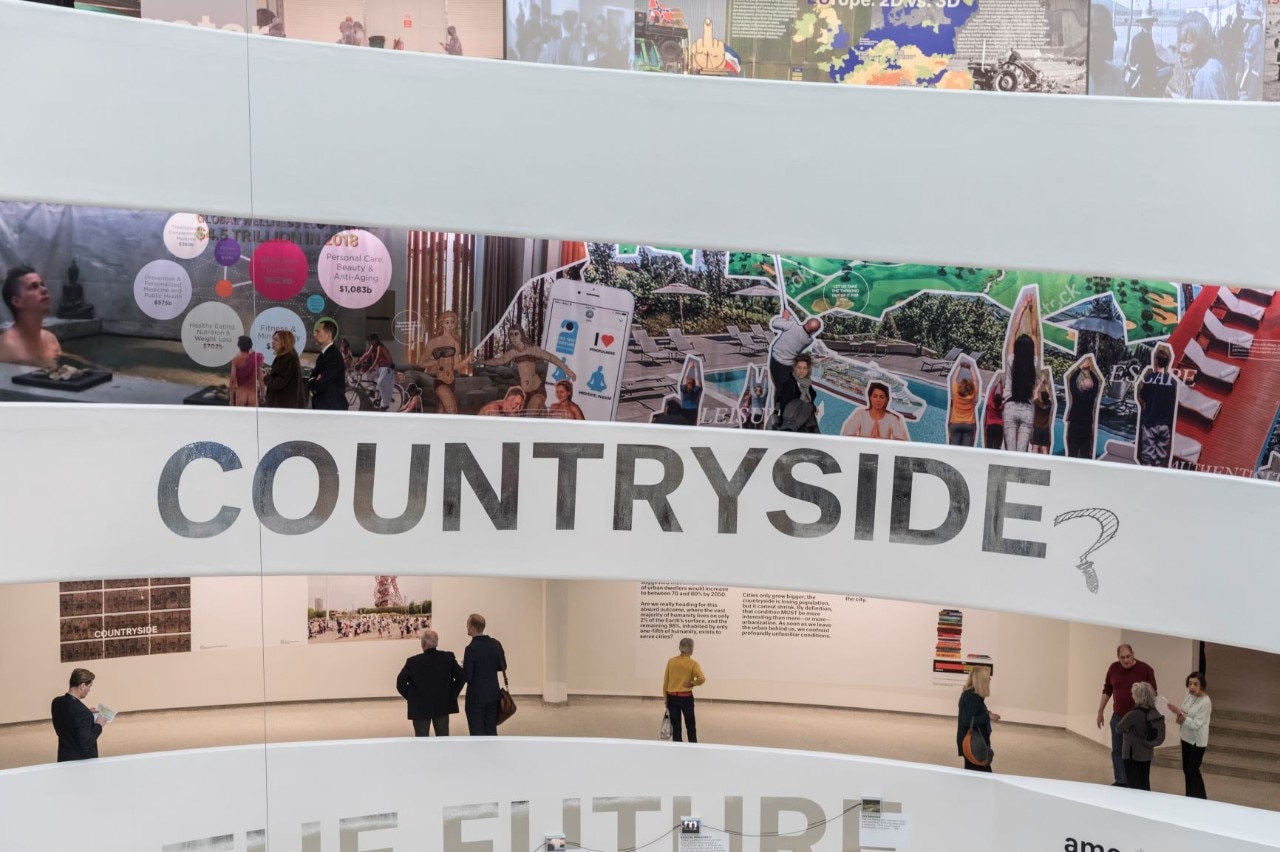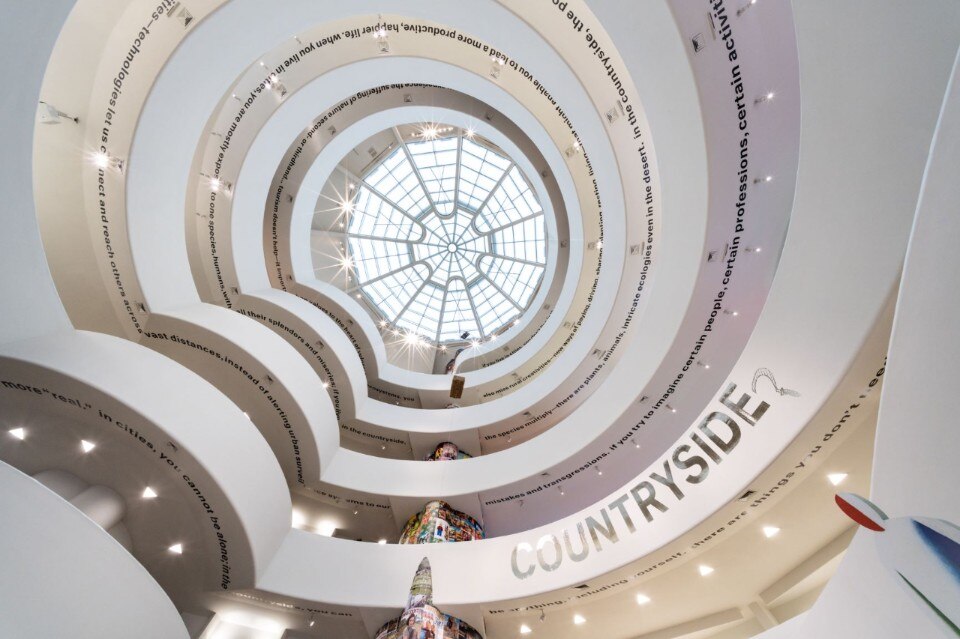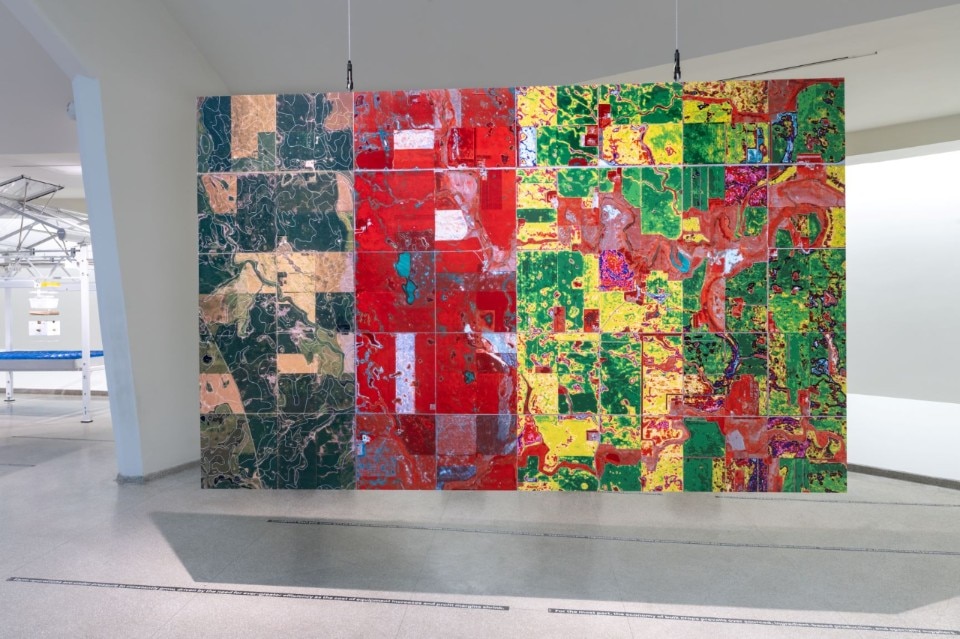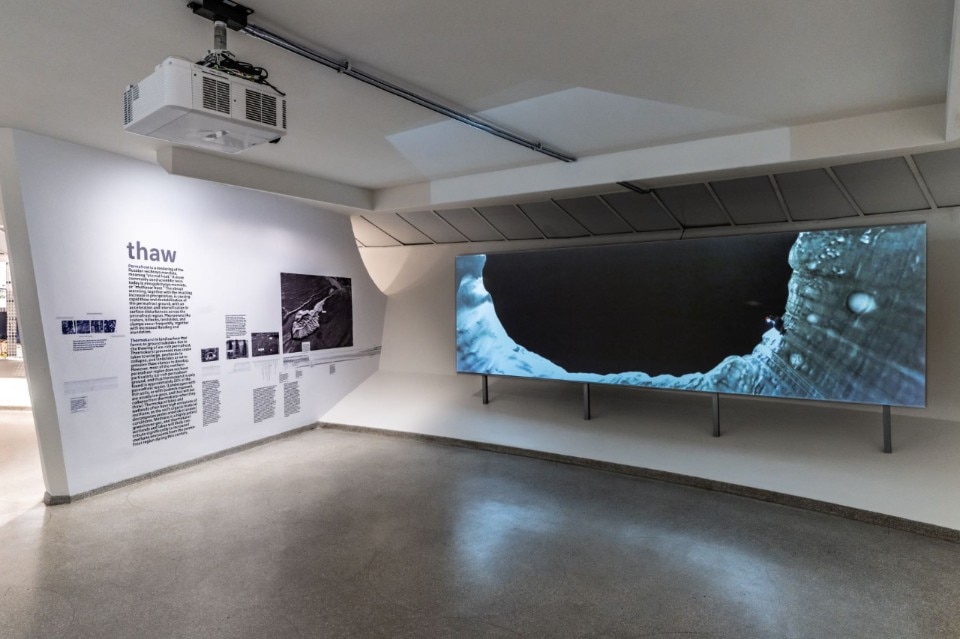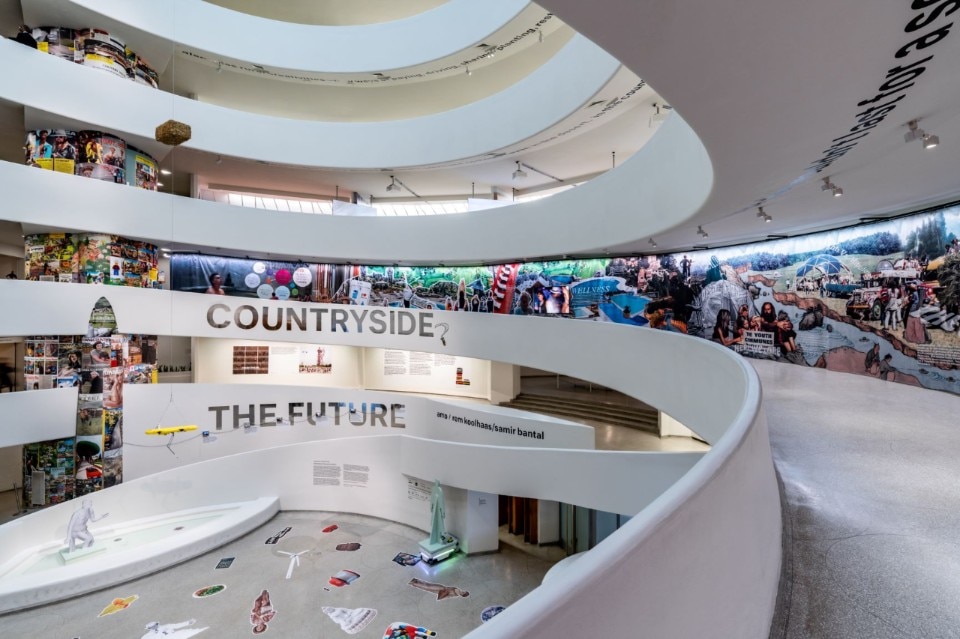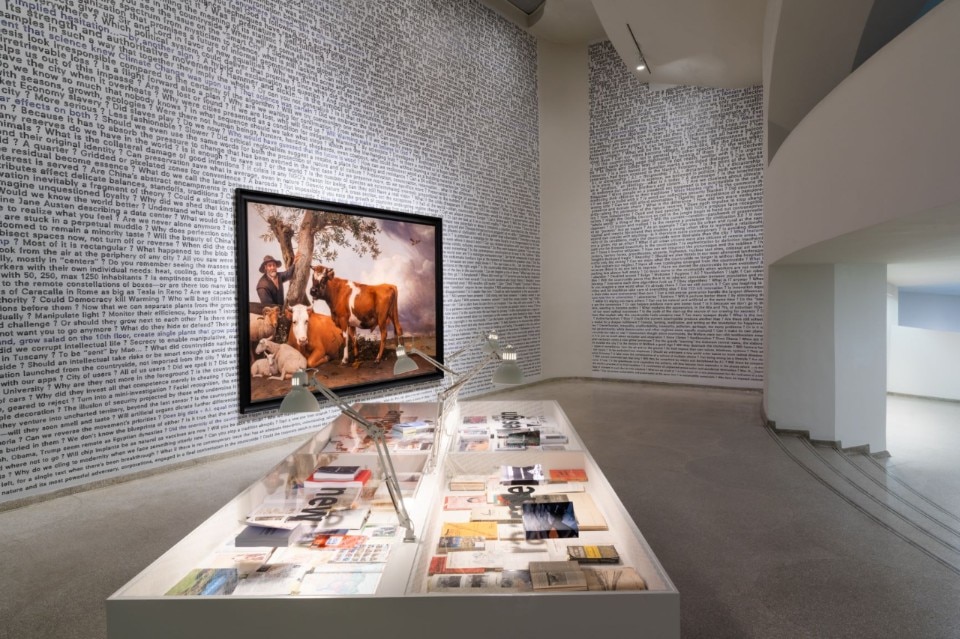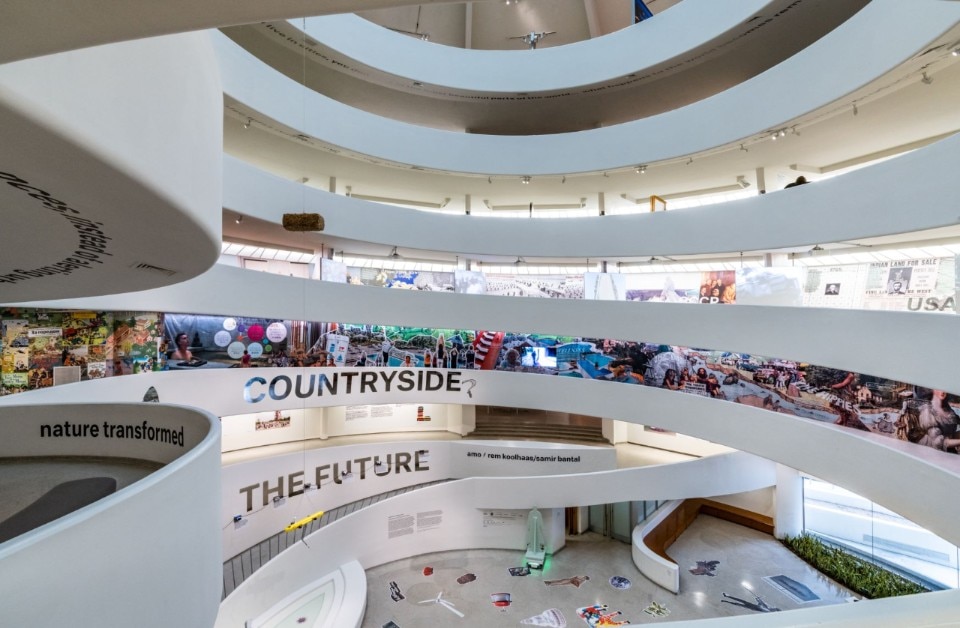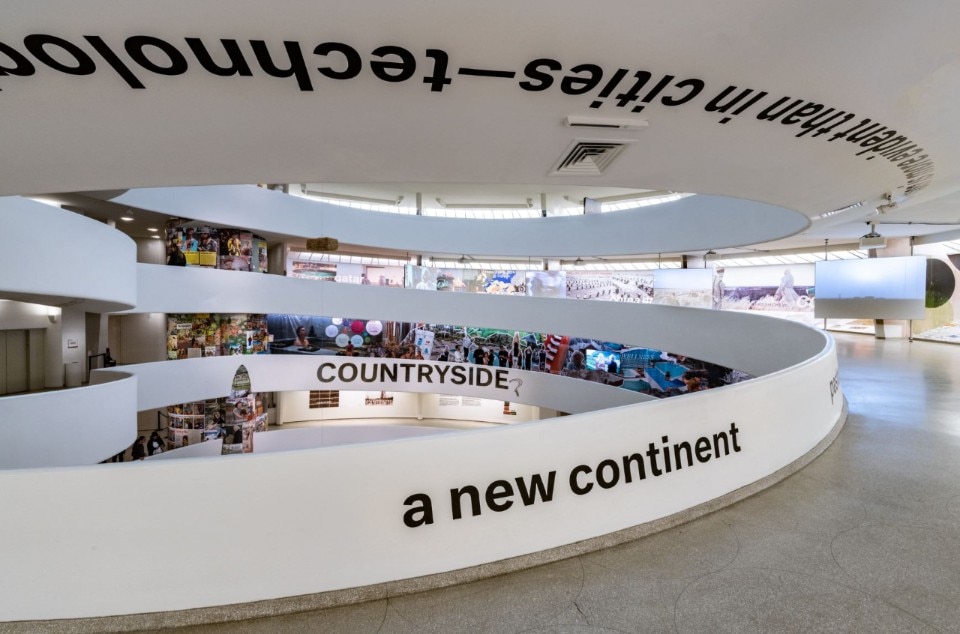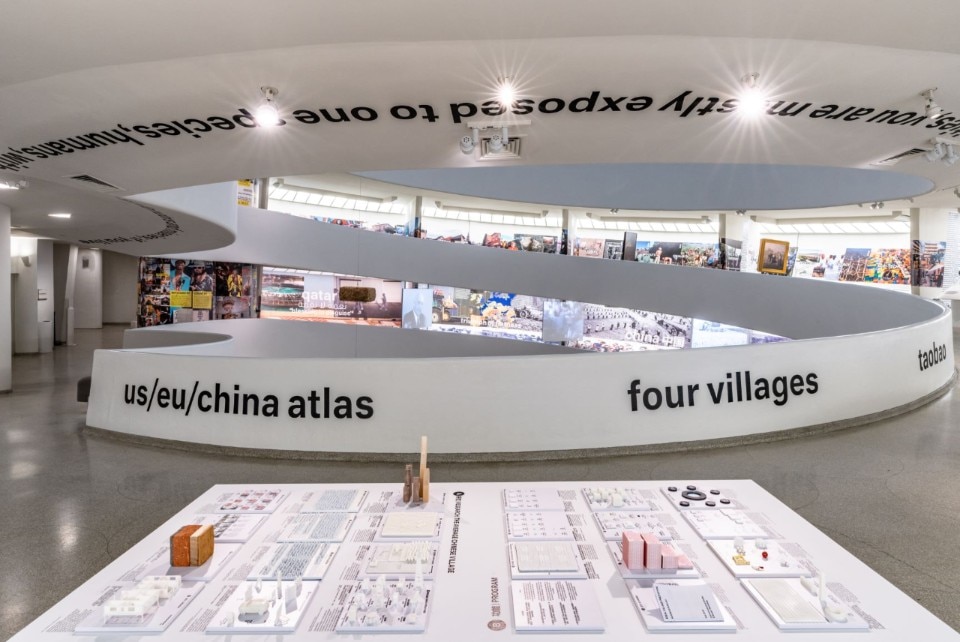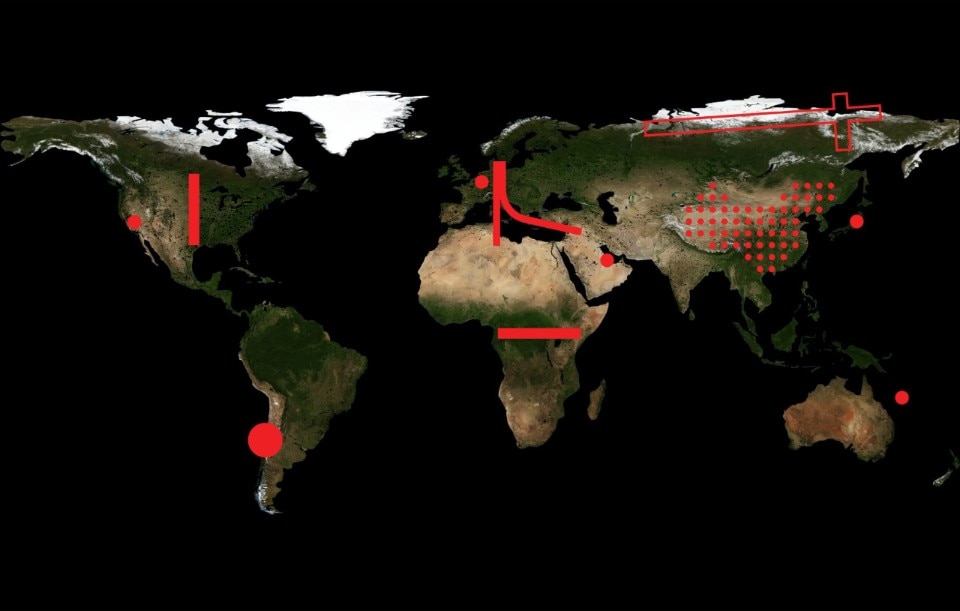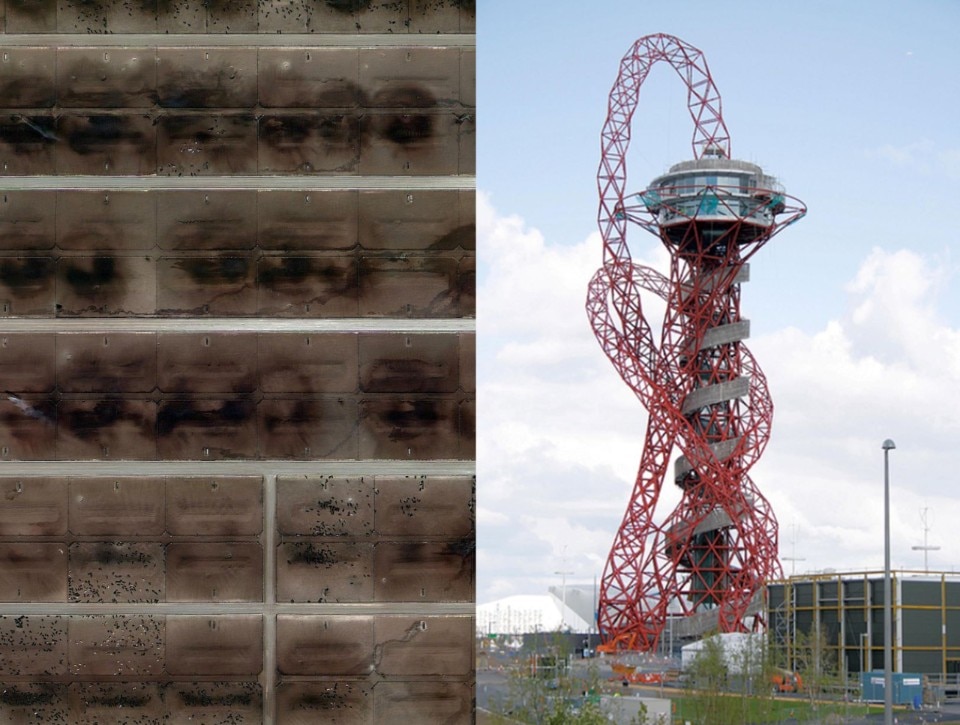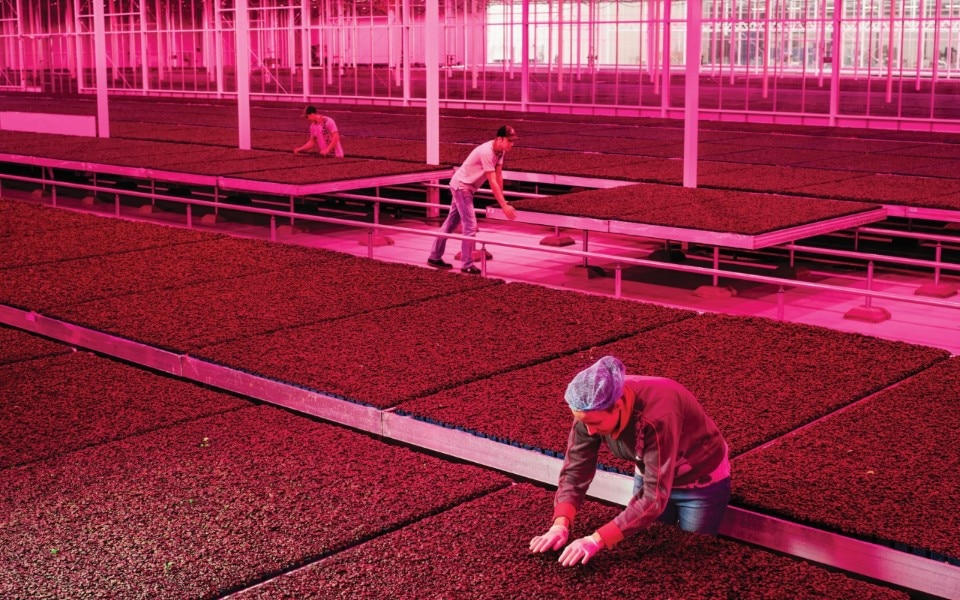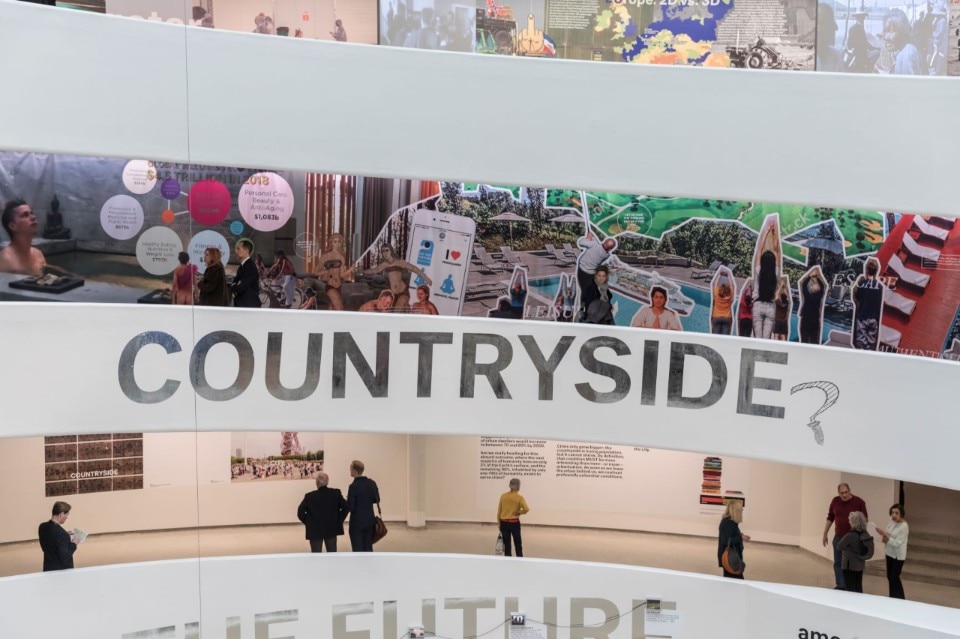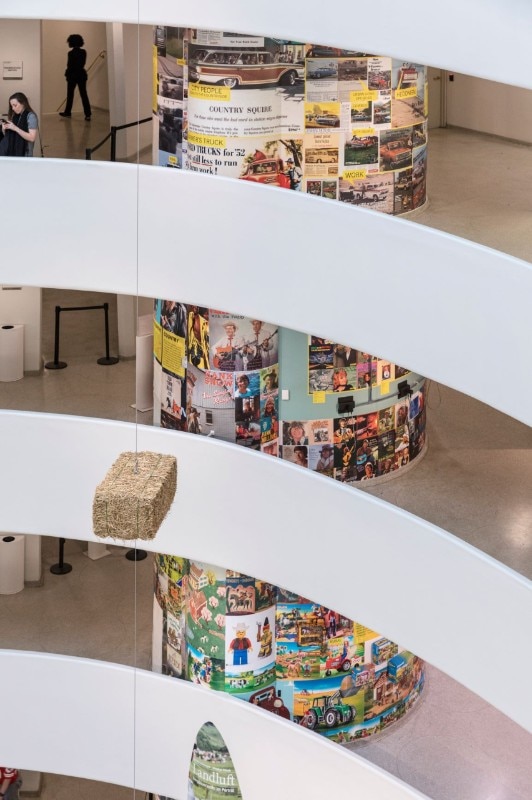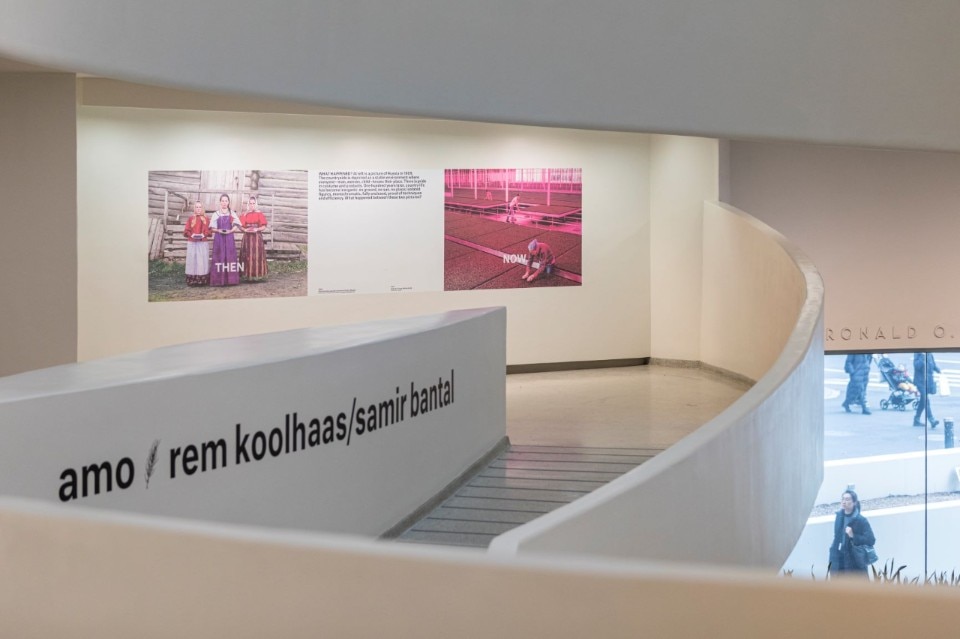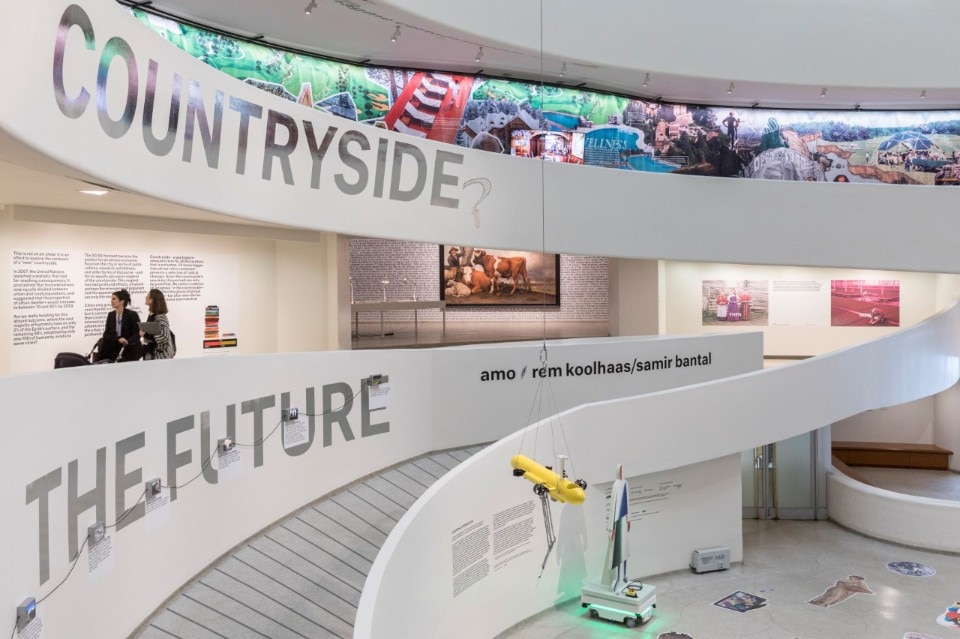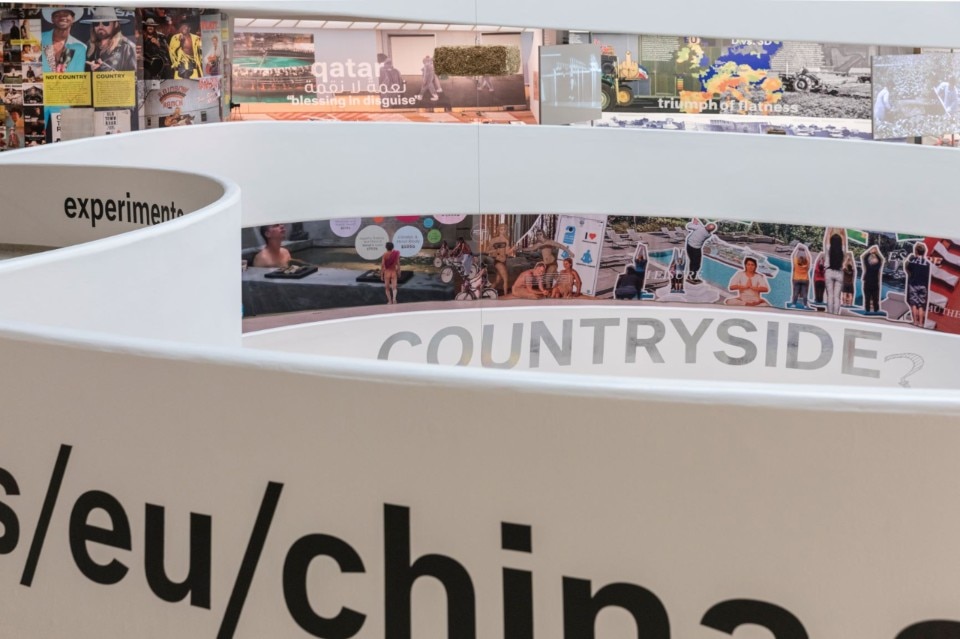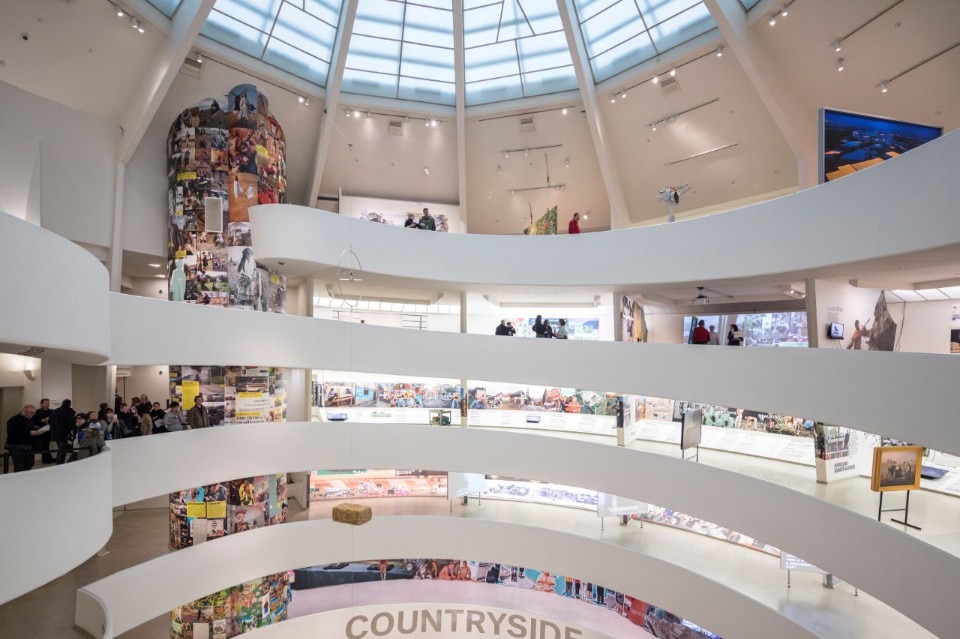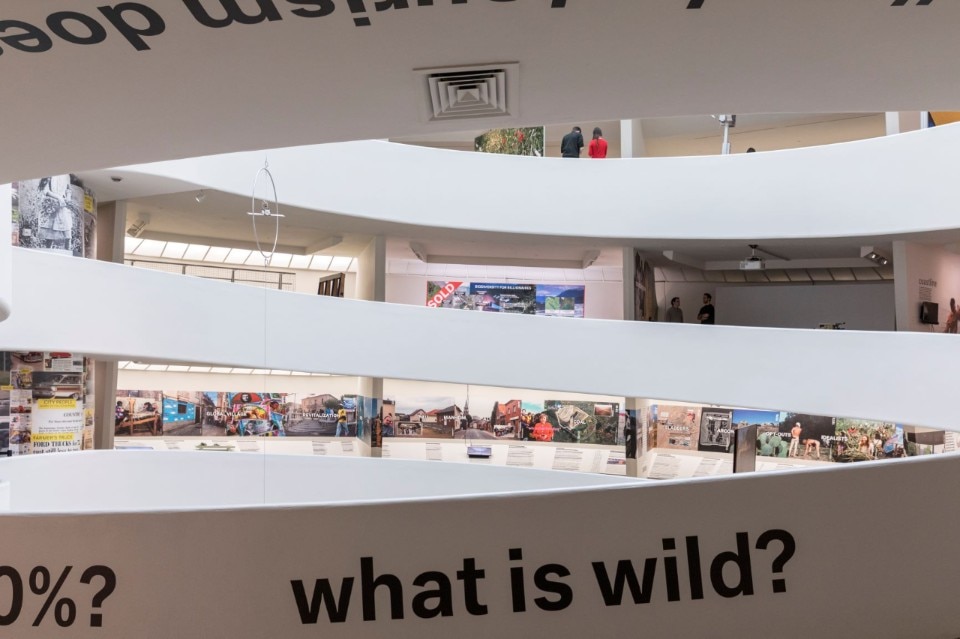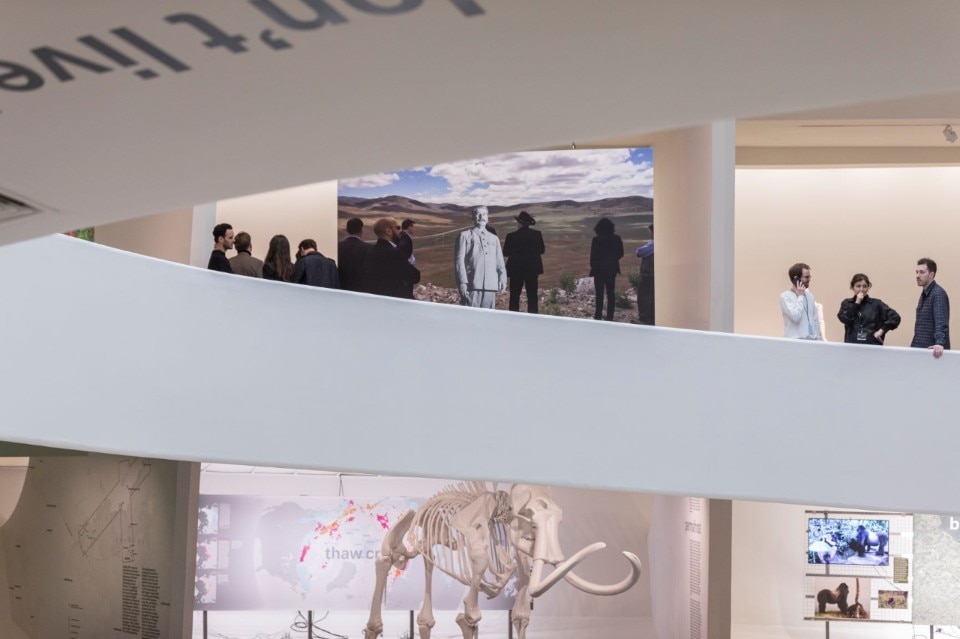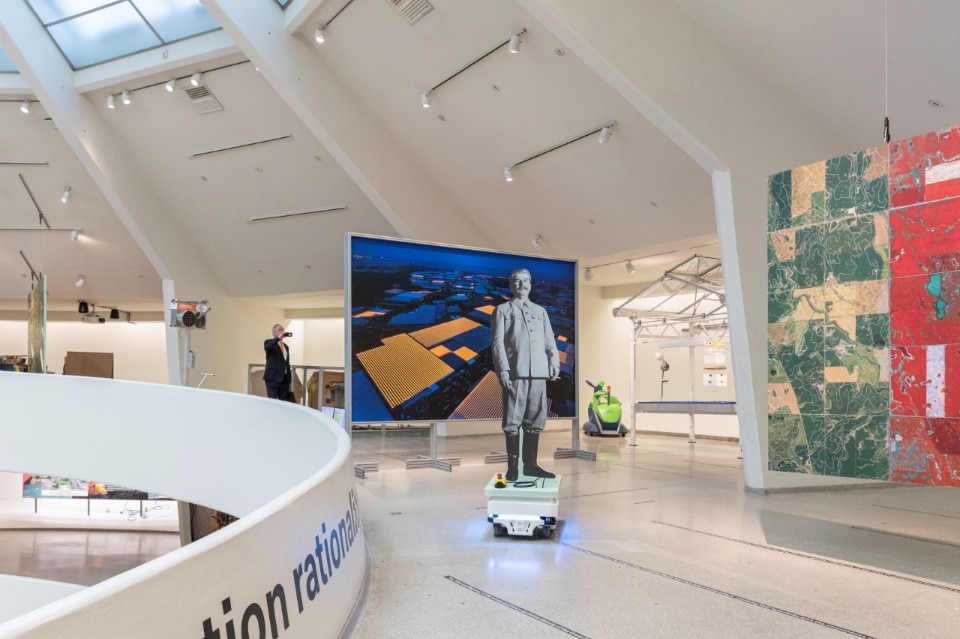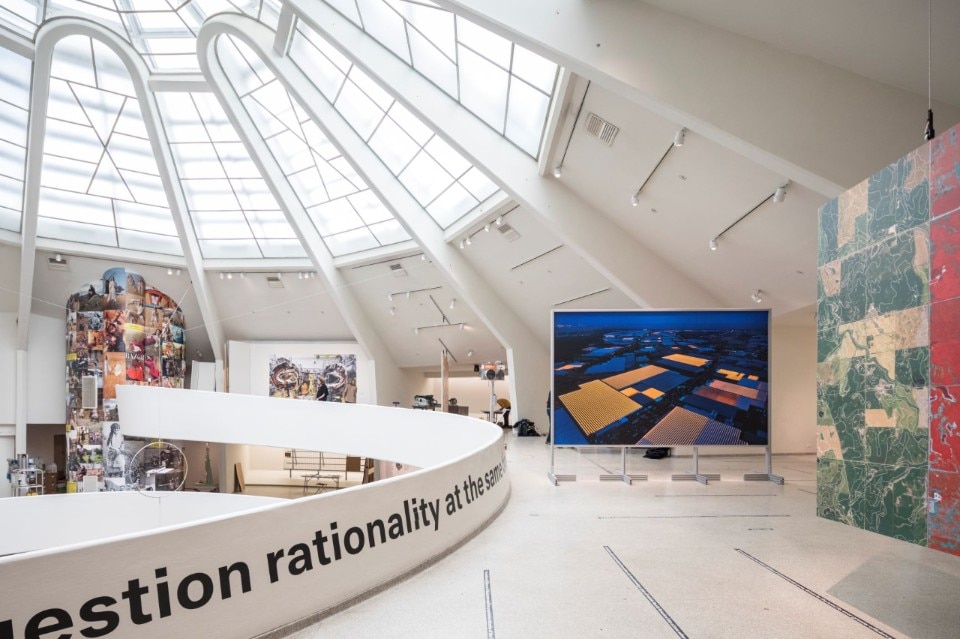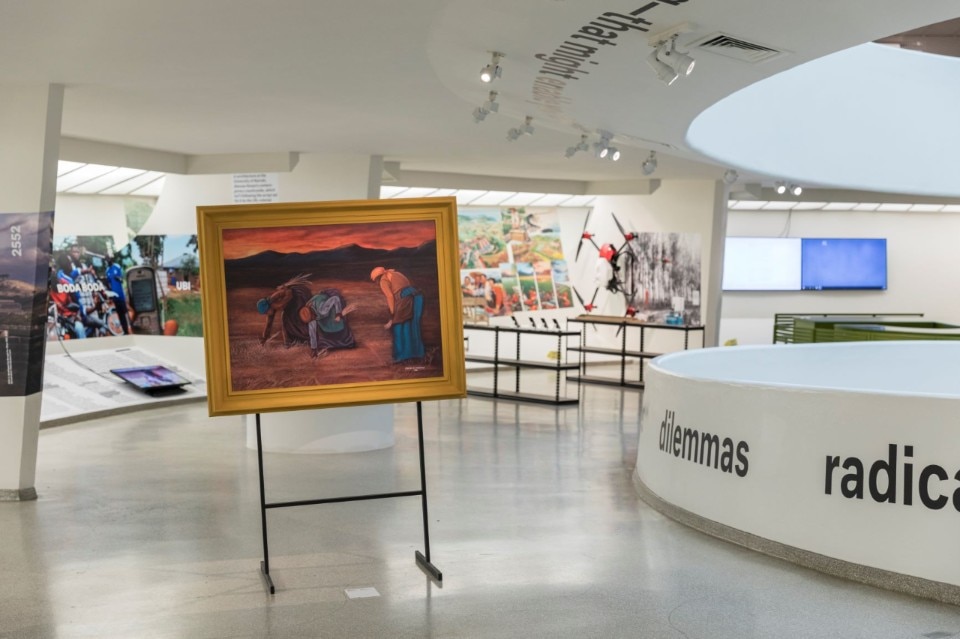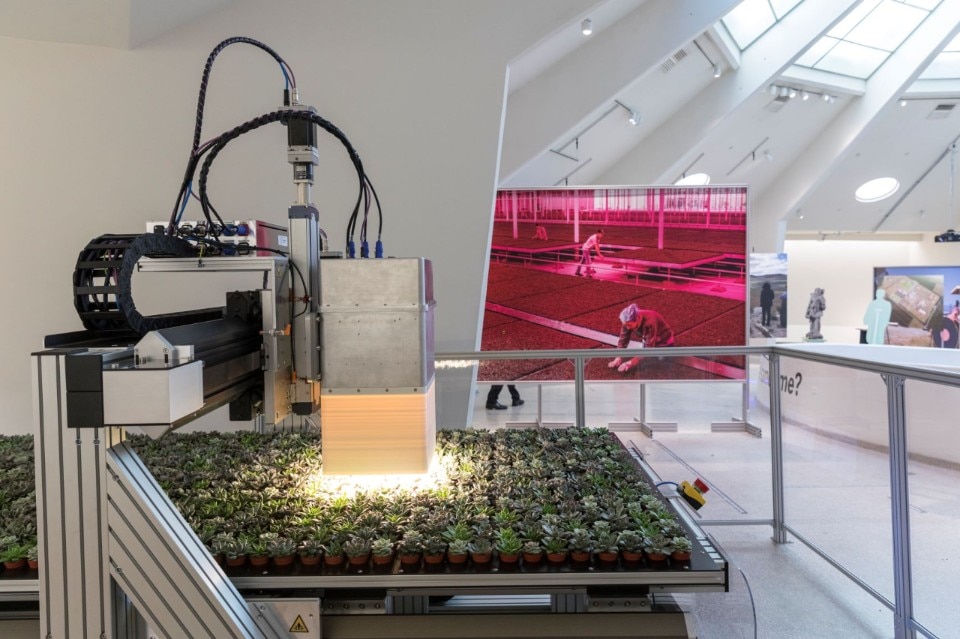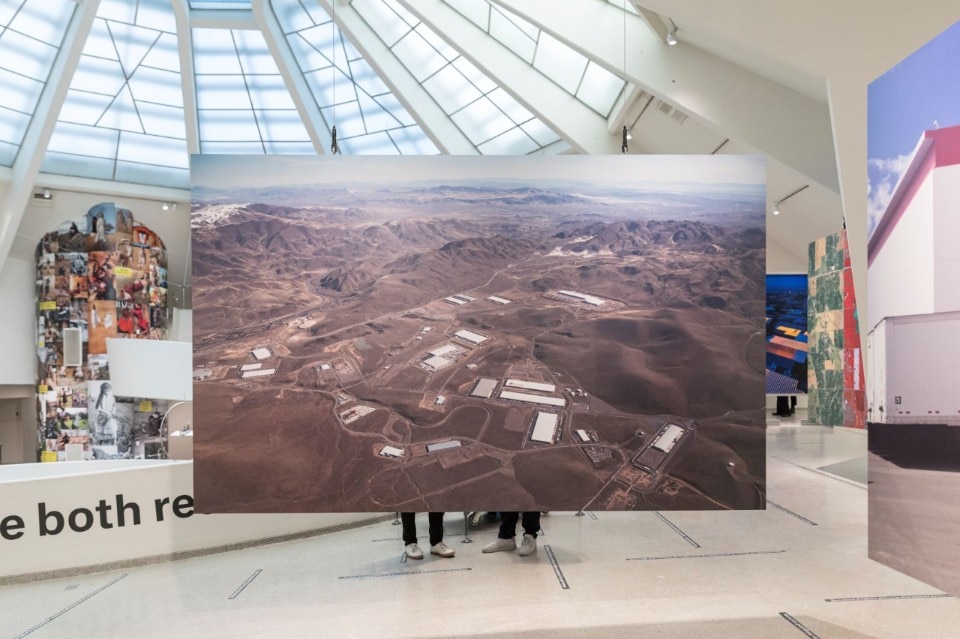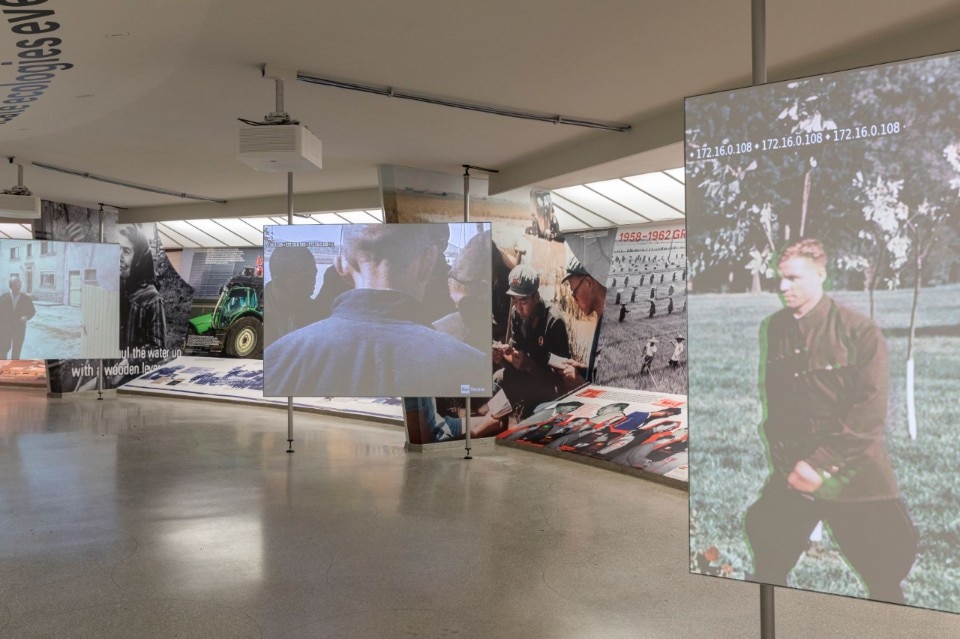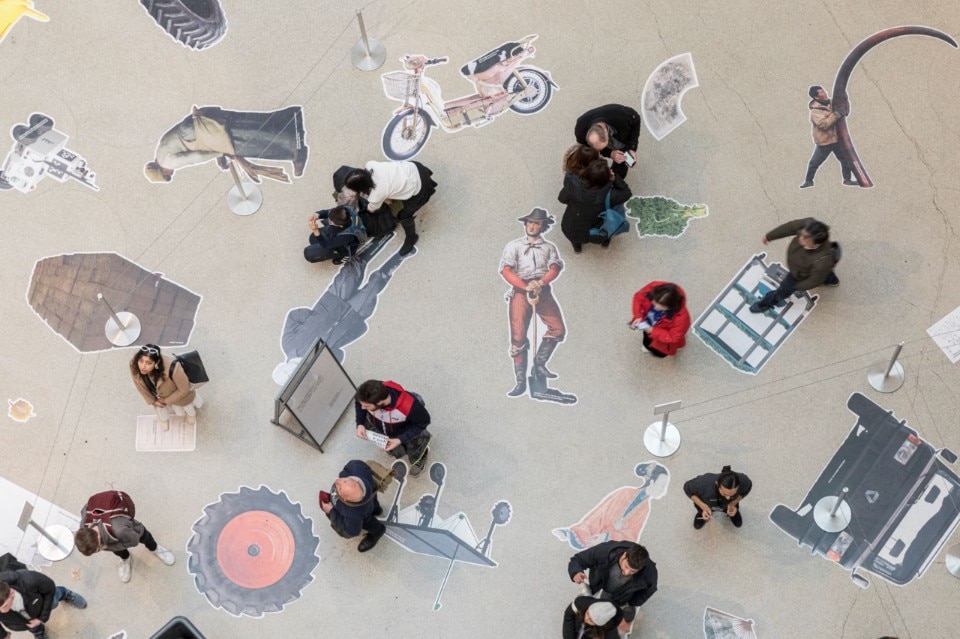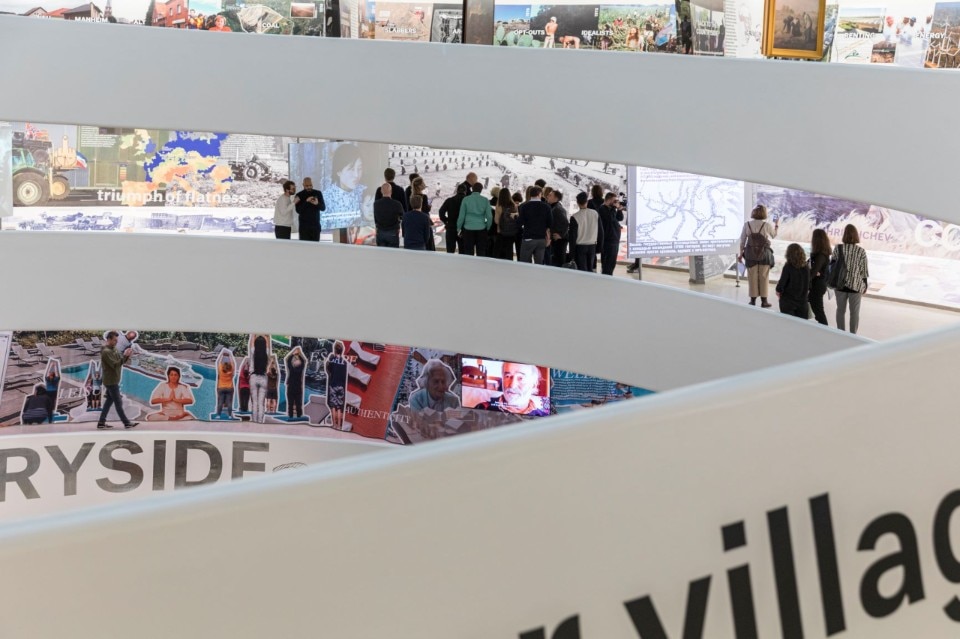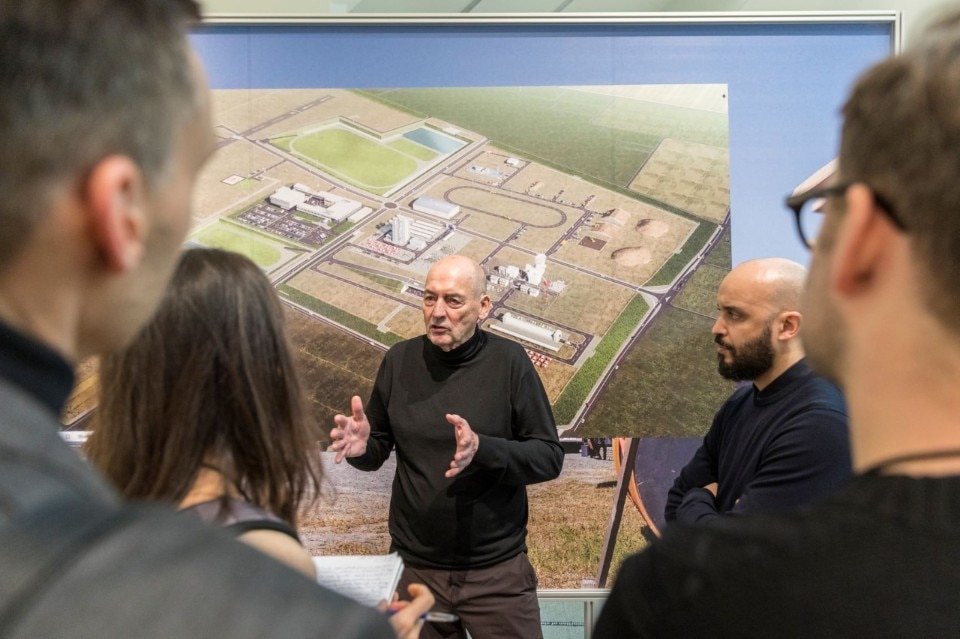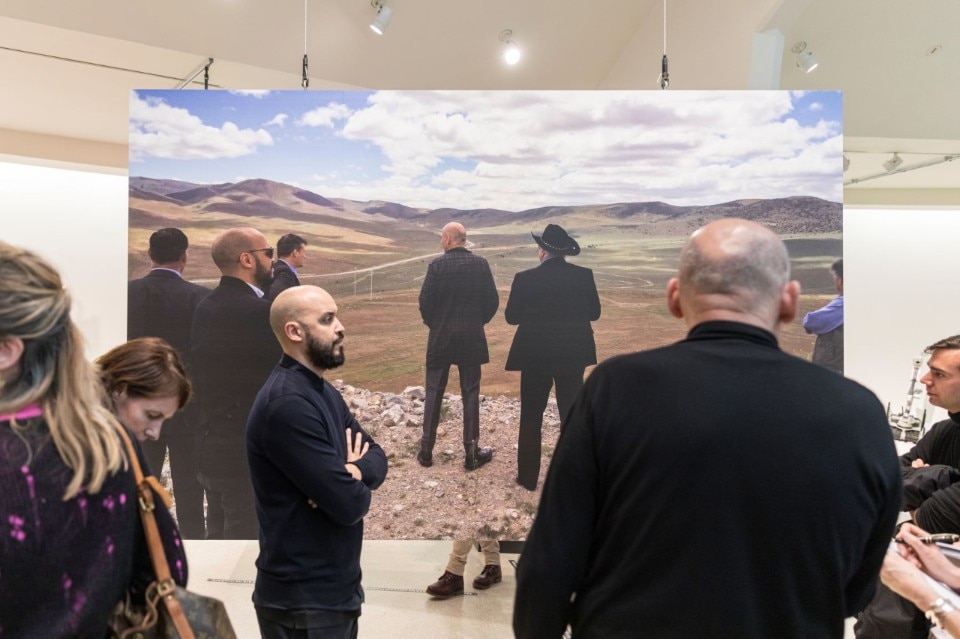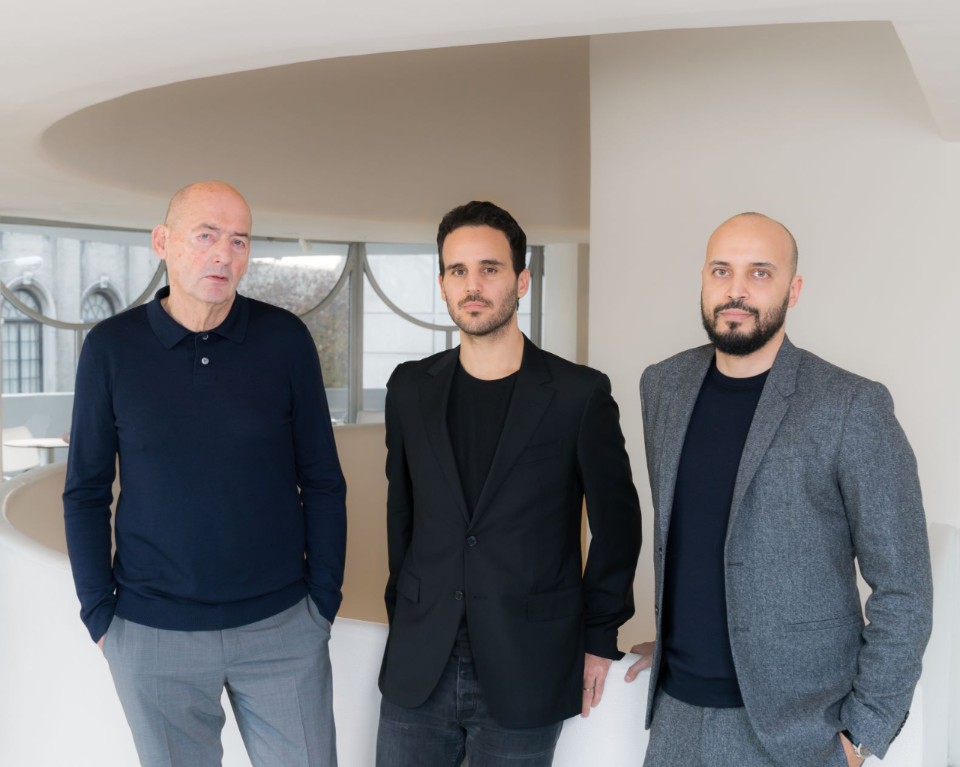A massive farm tractor, remotely controllable by computers, is parked outside the main entrance of the Solomon R. Guggenheim Museum in New York. Beside it stands a temporary agricultural container filled with tomato plants that grow beneath the optimized light of pink LEDs. These two machines—impressive, inhuman, and somewhat intimidating—are messengers from the countryside. If their presence on Fifth Avenue seems absurdly out of place, that is because Rem Koolhaas wants us city dwellers to stop neglecting “the other 98 percent of the Earth’s surface” that is not urban.
Koolhaas wants us to pay attention to what he calls, with a knowing wink, the countryside. It’s the subject of his latest research project and exhibition, “Countryside, The Future” (through August 2020), which fills the entire rotunda of the Guggenheim Museum. More than four years in the making, the project was realized in collaboration with AMO, the research arm of Koolhaas’s firm, led by Samir Bantal; Troy Conrad Therrien, the architecture curator at the Guggenheim; and students from several design schools. A nifty “pocketbook” designed by Irma Boom accompanies the exhibition. The show is impossibly huge and inevitably incomplete, yet compelling as a monumental montage. There are experimental farms and robots and pipelines and communes and aquaculture and data centers and advertisements for pickup trucks. There is a Siberian mammoth skeleton and a diagram of how the Chinese state works. Architecture in the “new” countryside is reduced, Koolhaas writes, to structures “based strictly on codes, algorithms, technologies, engineering, and performance, not intention.” Sorry, humanists.
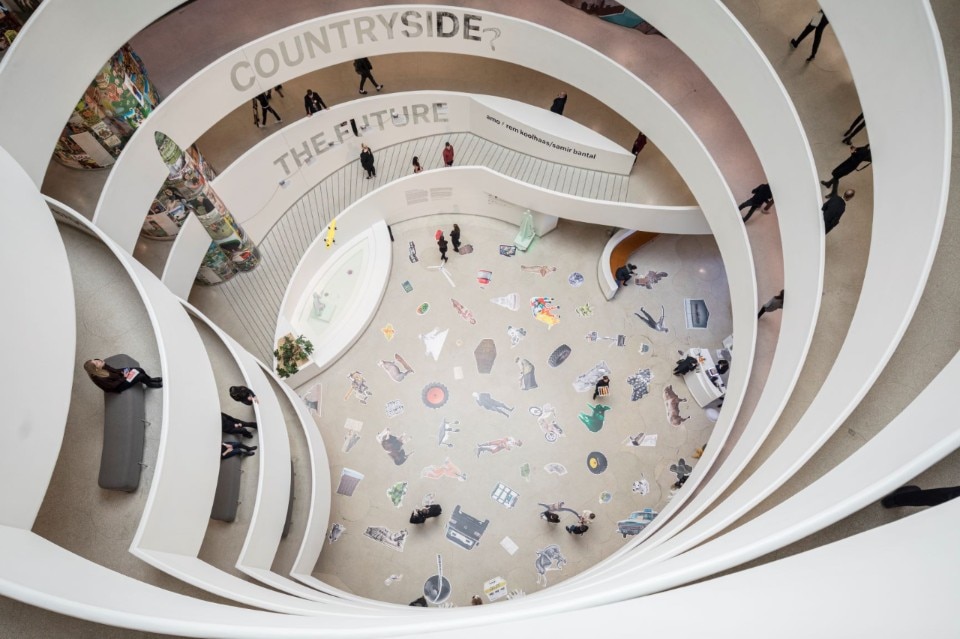
Alternating between narrative teasers and chaotic data overload, “Countryside, The Future” reflects the musings of an urbanite who longs for the countryside, but who is too smart to indulge in nostalgia for something he knows was a fiction all along. It also reflects Koolhaas’s fascination with the power and madness of Cartesian rationalism, which he associates with the Dutch mastery of nature in the 17th century, and which he sees manifest in today’s striated landscapes of big agriculture, big energy, and big data. His ultimate question, wrapping the uppermost spiral of the rotunda’s ramp, is an ethical one: “Can today’s extreme know-how be combined with goodness?” The way forward, Koolhaas and AMO suggest, may lie in alternative systems like biodiverse “pixel farming,” nuclear fusion, community-based land conservation, and innovative rural development as exemplified by the town of Voi, Kenya. The show includes a few references to indigenous practices—a nod to the growing body of research on the value of traditional ecological knowledge.
“Countryside, The Future” may be the grand finale to a method of investigation and storytelling that Koolhaas launched in 1978 with the publication of Delirious New York. Declaring himself “Manhattan’s ghostwriter,” Koolhaas narrated the fantastical nature of New York’s “Culture of Congestion” and warned that its unselfconscious glory was being suffocated by an onslaught of banal, overly rational buildings. A similar sense of disenchantment seems to motivate “Countryside, The Future”, which Koolhaas says began when he noticed that a Swiss village he frequented for twenty years was being transformed by global economic shifts. “Nothing was what it seemed,” he writes in the prelude to the exhibition. “The countryside was deeply unstable.” He goes on to criticize the global tourism industry, the wellness economy, and the enduring mythology of the countryside. Of course, instability has long haunted the countryside. Included in the exhibition is plenty of evidence of dramatic changes at every epoch since the Scientific Revolution, such as Dutch landscape architecture in the 1600s, Marie-Antoinette’s simulated hamlet at Versailles (1783–1786), Fourier’s phalansteries (1808), and Mao’s Great Leap Forward (1958–1962), to name a few. The six-story-tall “Semiotics Column” prepared by journalist Niklas Maak as part of a seminar at Harvard University reveals how toys, advertisements, and fashion produce fantasies about the countryside.
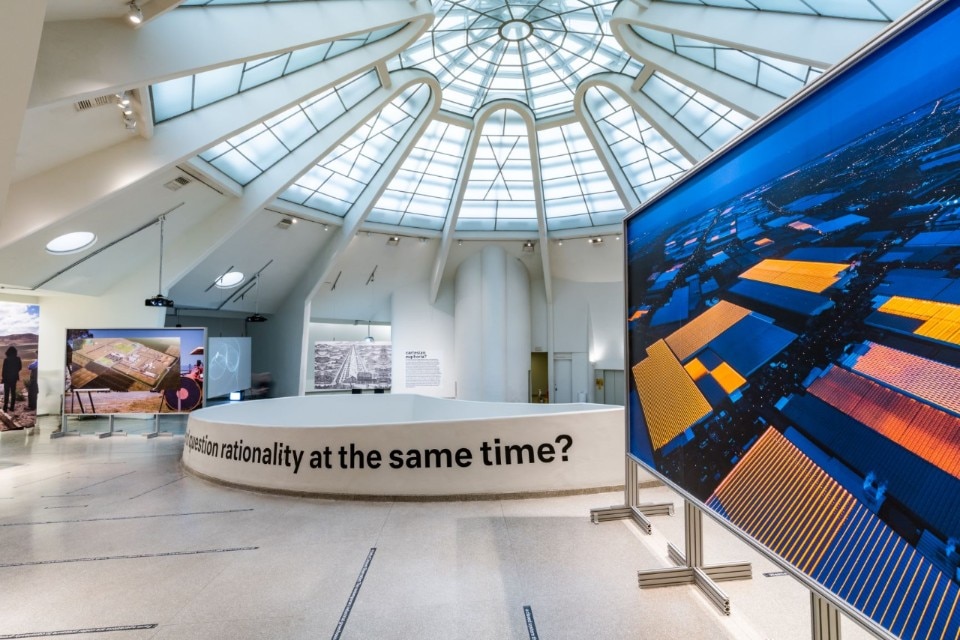
While Koolhaas and AMO concede that the term “countryside” is “glaringly inadequate,” its use as an organizing device seems like a kind of ruse, since the titular “countryside” is shown to consist of regimented landscapes of production that are bound up inexorably with cities. That is why Henri Lefebvre in 1970 theorized the “complete urbanization” of society. Superstudio’s Continuous Monument (1969) gave visual expression to the notion of relentless expanding urban infrastructure, echoed in part by Koolhaas’s drawings for Exodus, or the Voluntary Prisoners of Architecture (1972), which he made with Elia Zenghelis, Madelon Vriesendorp, and Zoe Zenghelis. Today, research on suburbs and exurbs has recently picked up momentum, as shown in the massive anthology Infinite Suburbia (Princeton Architectural Press, 2017). But there is no mention of suburbs or exurbs in “Countryside, The Future”. More glaringly, the term “metropolitan”, which saturates Koolhaas’s earlier writings and appears in the name of his Rotterdam-based firm, the Office for Metropolitan Architecture (OMA), is all but absent from the show. It’s a telling omission, since some of the key sites shown in the exhibition, such as the Westland industrial district outside the Hague and the SUPERNAP data center in Las Vegas, clearly belong to metropolitan conurbations. Koolhaas, it should be remembered, embraces irony. His “new” countryside looks a lot like the next frontier of urbanization.
- Exhibition:
- Countryside, The Future
- Where:
- Solomon R. Guggenheim Museum, New York
- Opening dates:
- February 20 – August 14 2020
- Address:
- 1071 5th Ave, New York, NY 10128, United States


